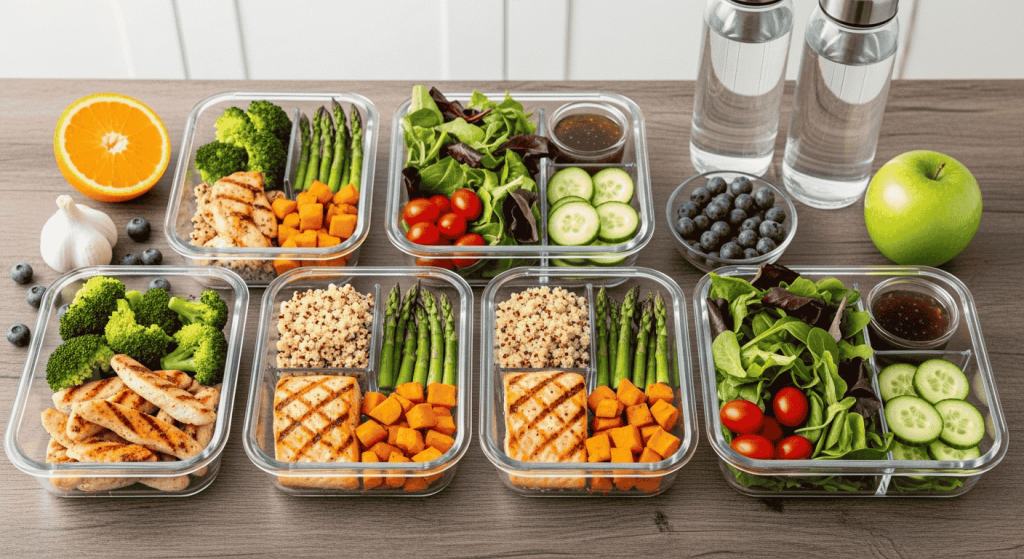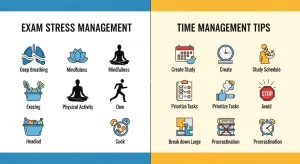Introduction
When it comes to achieving sustainable weight loss, diet plays a crucial role. But sticking to a plan can be overwhelming without structure. That’s where meal planning for weight loss comes in. By preparing meals ahead of time, controlling portions, and focusing on nutrient-dense foods, you can make healthy eating effortless.
This guide will walk you through everything you need to know about creating a weight loss meal plan, from shopping tips to sample meal ideas—making your journey smoother and more effective.
High Protein Vegetarian Meals
Why Meal Planning is Key to Weight Loss
Meal planning is more than just cooking in bulk—it’s a strategy that ensures consistency, saves time, and prevents impulsive food choices. Here’s why it’s effective:
-
Portion control: Prevents overeating and keeps calories in check
-
Balanced nutrition: Ensures you get protein, healthy fats, and fiber
-
Saves time and money: Reduces daily cooking stress and limits takeout
-
Supports fat loss: Helps align meals with your weight loss goals
Top 10 Healthy Eating Tips for Weight Loss (2025)
Step-by-Step Guide to Meal Planning for Weight Loss
1. Set Realistic Goals
Before diving into your weight loss meal plan, define your calorie needs. Use a calorie calculator or consult a nutritionist to determine daily requirements.
2. Plan Balanced Meals
Each meal should include:
-
Lean protein (chicken, tofu, eggs, fish)
-
Complex carbs (brown rice, quinoa, oats)
-
Healthy fats (avocado, olive oil, nuts)
-
Vegetables (broccoli, spinach, peppers)
This balance ensures your meal prep for weight loss is filling and nutrient-rich.
3. Create a Weekly Meal Plan
Example of a 7-day weight loss meal plan outline:
| Day | Breakfast | Lunch | Dinner | Snack |
|---|---|---|---|---|
| Monday | Oatmeal + berries | Grilled chicken + salad | Salmon + quinoa | Greek yogurt + nuts |
| Tuesday | Veggie omelet | Turkey wrap + hummus | Stir-fry with tofu | Apple + peanut butter |
| Wednesday | Smoothie bowl | Lentil soup + side salad | Baked cod + sweet potato | Carrot sticks + hummus |
(Continue similar structure for rest of the week)
4. Grocery Shopping Made Simple
-
Stick to your list to avoid processed snacks
-
Buy in bulk for grains and proteins
-
Prep veggies in advance for quick cooking
5. Prep and Store Meals
Cook in batches and store in portioned containers. Freezer-friendly meals like soups, stir-fries, and grain bowls are great for busy days.
Nothing CMF Watch 3 Pro Review: Full Specs, Features & Price (2025)
Smart Tips for Successful Meal Prep
-
Use spices and herbs for flavor without extra calories
-
Rotate recipes to avoid boredom
-
Prep snacks like cut fruits, nuts, and boiled eggs
-
Keep healthy staples (oats, rice, chicken, veggies) on hand
Common Mistakes to Avoid in Meal Planning
-
Skipping meals (leads to overeating later)
-
Relying only on salads (can cause nutrient gaps)
-
Overcomplicating recipes (keep it simple for consistency)
-
Not adjusting portions when progress stalls
Most Underrated Islands in Europe – Peaceful Escape Guide
FAQs About Meal Planning for Weight Loss
Q1: What is the best meal plan for weight loss?
A1: The best meal plan is one that fits your lifestyle, includes lean proteins, healthy carbs, and veggies, and keeps calories slightly below your daily needs.
Q2: How many meals a day should I eat to lose weight?
A2: Most people do well with 3 balanced meals and 1–2 healthy snacks. The key is portion control and sticking to your calorie target.
Q3: Can meal prepping really help with fat loss?
A3: Yes, meal prepping ensures you have healthy, portioned meals ready, preventing fast-food cravings and helping you stay consistent with your diet.
Final Thoughts
Meal planning for weight loss is not about restriction—it’s about making healthy eating simple, structured, and sustainable. By creating a routine, prepping meals ahead, and focusing on balance, you’ll find it easier to stay on track with your goals.
👉 Ready to start your journey? Explore meal prep containers, recipe books, and weight loss meal kits here:











